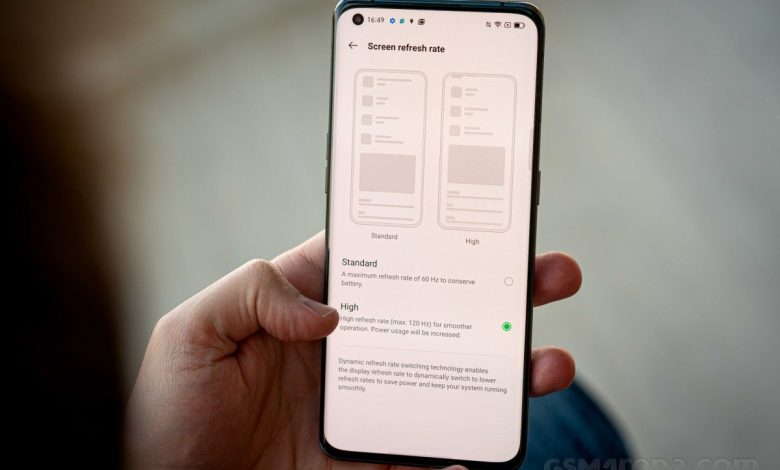
The OnePlus 9 series are all set to use the new LTPO type of AMOLED display. One of the key advantages of this tech is that it easily supports adaptive refresh rate – CEO Pete Lau revealed that the OnePlus 9 duo will be able to go from 120Hz all the way down to 1Hz.
Similarly, Oppo too launched the Find X3 Pro with an LTPO type AMOLED display, and which supports the adaptive refresh rate from 1 Hz to 120 Hz. The Chinese company promised the flagship would have this feature, but launched it without, just to push it through an OTA update, starting today, 18th March.
The Find X3 Pro will recognize which app is being used and will reduce the refresh rate of the screen, thus lowering the battery consumption. For example, when previewing photos or using an e-reader app, it could get as low as 1 Hz, but in practice, it rarely happens.
However, with the new update, the screen does adapt to different applications. A video revealed that there are indeed different scenarios, and the phone adapts to them. The number in purple reveals the actual refresh rate, and 1 Hz is reached when the app drawer is opened and nothing is happening. Video apps like YouTube and Tencent Video go between 24 Hz and 60 Hz, while some games actually do run in 90 Hz.
This adaptive refresh rate will be a boon for things like the Always On Display and other instances where the phone is showing a static screen. The CEO of Oneplus is also keen to point out that not all 120Hz panels are born the same.
Oneplus also revealed that the AMOLED panel will have 1440p+ resolution and will natively support 10-bit color. It will be able to smoothly adjust its brightness in 8,192 tiny steps.
OnePlus will imbue the 9-series with gaming flavor. The 9 Pro will have a 5-layer “gaming-grade” cooling system to keep the Snapdragon 888 chipset running as fast as possible.
The upcoming phones will feature a high touch sampling rate (exact frequency is TBA), which will allow them to react to input more quickly. Here’s a comparison between the OnePlus 9 Pro and the Samsung Galaxy S21 Ultra (as tested by OnePlus, at least).
